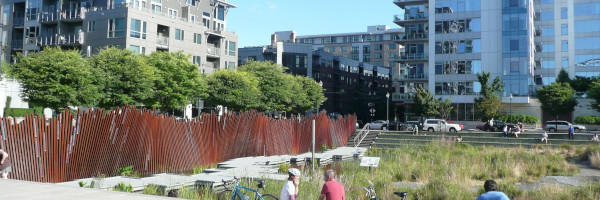Regenerative Urbanism
| Buildings | ||||||||||||||||||||||||||||||||||||
|---|---|---|---|---|---|---|---|---|---|---|---|---|---|---|---|---|---|---|---|---|---|---|---|---|---|---|---|---|---|---|---|---|---|---|---|---|

| ||||||||||||||||||||||||||||||||||||
| Sectors | Buildings | |||||||||||||||||||||||||||||||||||
| Contact | Charles Kelley | |||||||||||||||||||||||||||||||||||
| Topics |
| |||||||||||||||||||||||||||||||||||
Activities
Press
| ||||||||||||||||||||||||||||||||||||
- Authors
Regenerative urbanism is a philosophy and approach to urban design and development that aims to create cities and communities that not only sustain themselves, but also improve the health and well-being of both the natural environment and the people who live in them.
This can be achieved through a variety of strategies, such as incorporating green spaces, promoting walkability and bike-friendliness, and designing buildings and infrastructure that are energy-efficient and make use of renewable resources. The goal of regenerative urbanism[1] [2] is to create cities that are resilient, adaptive, and regenerative, and that contribute positively to the overall ecological, social, and economic well-being of the planet.
Incorporating Green Spaces
There are several principal approaches to incorporating green spaces into urban design, including:
- Parks and gardens: Creating large public parks and gardens in the heart of cities provides green spaces for people to enjoy, as well as helping to improve air quality and reducing the urban heat island effect.
- Green roofs and walls: Incorporating green roofs and walls on buildings can help to reduce energy consumption, improve air quality, and create additional green spaces in urban areas.
- Rainwater harvesting: Incorporating systems for harvesting and reusing rainwater can help to reduce the strain on municipal water systems and promote sustainable water management.
- Street trees and green corridors: Planting street trees and creating green corridors can help to improve air quality, reduce the urban heat island effect, and provide additional green spaces for people to enjoy.
- Bioswales and green infrastructure: Incorporating bioswales and other forms of green infrastructure into urban design can help to improve water quality, reduce flooding, and create additional green spaces.
- Community gardens and urban agriculture: Creating community gardens and promoting urban agriculture can help to increase access to fresh fruits and vegetables, promote sustainable food systems, and create additional green spaces in urban areas.
- Greenbelt preservation: Preserving existing greenbelts and natural areas around cities can help to protect biodiversity and provide additional green spaces for people to enjoy.
Promoting Walkability
Promoting walkability in urban design can be achieved through a variety of strategies, including:
- Pedestrian-friendly streets: Designing streets that prioritize pedestrians over cars, such as by narrowing car lanes, adding sidewalks and crosswalks, and reducing speed limits, can make it safer and more comfortable for people to walk.
- Connected street network: Creating a connected street network with a variety of routes and destinations can make it easier for people to walk to different parts of the city.
- Mixed-use development: Encouraging the development of mixed-use areas, with a mix of residential, commercial, and retail spaces, can create walkable neighborhoods with a variety of destinations within easy walking distance.
- Public transportation: Incorporating convenient and reliable public transportation can make it easier for people to walk to transit stops and stations.
- Bike infrastructure: Incorporating bike infrastructure, such as bike lanes and bike-sharing programs, can make it safer and more comfortable for people to walk to destinations that are further away.
- Pedestrian amenities: Incorporating amenities such as benches, shade structures, and public restrooms can make it more comfortable for people to walk.
- Pedestrian-friendly design: Incorporating design elements that prioritize pedestrians, such as wide sidewalks, accessible curb ramps, and street level retail to create lively streets.
- Safety and security: Incorporating safety and security measures, such as good lighting, surveillance cameras, and emergency call boxes, can make people feel safer and more comfortable walking in the city.
Bike-Friendliness
Making the urban environment bike-friendly can be achieved through a variety of strategies, including:
- Bike lanes and paths: Incorporating dedicated bike lanes and paths can make it safer and more convenient for people to bike in the city.
- Bike parking: Providing ample and secure bike parking can make it easier for people to park their bikes and encourage more people to bike.
- Bike-sharing programs: Implementing bike-sharing programs can make it more convenient for people to access bikes and encourage more people to bike.
- Integration with public transportation: Incorporating bike-sharing programs and bike parking at public transit stops and stations can make it easier for people to combine biking with public transportation.
- Bike-friendly street design: Incorporating bike-friendly design elements, such as traffic calming measures, can make streets safer for bicyclists.
- Education and promotion: Educating the public about the benefits of biking, and promoting biking as a viable mode of transportation can encourage more people to bike.
- Supportive laws and policies: Implementing laws and policies that support biking, such as laws that protect bicyclists from cars, can make biking safer and more convenient.
- Accessibility: Making sure that bike infrastructure and facilities are accessible for people with disabilities and for people with different levels of biking abilities.
- Investment: Investing in biking infrastructure and programs as a priority in the city's budget.
- Data and evaluation: Collecting data on biking usage and evaluating the effectiveness of biking infrastructure and programs can help identify areas for improvement and guide future decisions.
Energy Efficient
Promoting energy efficiency in the urban environment can be achieved through a variety of strategies, including:
- Building design and construction: Incorporating energy-efficient design and construction techniques, such as passive solar design, high-efficiency heating and cooling systems, and the use of renewable energy sources, can reduce energy consumption in buildings.
- Building codes and standards: Adopting and enforcing building codes and standards that require energy-efficient design and construction can help to reduce energy consumption in buildings.
- Energy audits and retrofits: Conducting energy audits and retrofitting existing buildings to increase energy efficiency can help to reduce energy consumption in buildings.
- Renewable energy: Incorporating renewable energy sources, such as solar, wind, and geothermal, can help to reduce the reliance on fossil fuels and decrease the carbon footprint of the urban environment.
- Transportation: Encouraging the use of public transportation, biking, and walking can help to reduce energy consumption and emissions from transportation.
- Smart Grid: Implementing a smart grid infrastructure can help to improve energy efficiency by enabling the integration of renewable energy sources, the deployment of energy storage systems and the optimization of energy consumption.
- Energy-efficient public lighting: Replacing traditional street lighting with energy-efficient LED lighting can help to reduce energy consumption and costs.
- Education and awareness: Educating the public about the benefits of energy efficiency and encouraging energy-efficient behaviors can help to reduce energy consumption.
- Incentives and subsidies: Offering incentives and subsidies for energy-efficient products and practices can help to encourage the adoption of energy-efficient technologies and behaviors.
- Monitoring and evaluation: Monitoring energy consumption and evaluating the effectiveness of energy-efficient measures can help to identify areas for improvement and guide future decisions.
Renewable Resources
Promoting the use of renewable resources in the urban environment can be achieved through a variety of strategies, including:
- Incorporating renewable energy systems: Incorporating renewable energy systems, such as solar, wind, and geothermal, into the design of buildings and infrastructure can help to reduce the reliance on fossil fuels and decrease the carbon footprint of the urban environment.
- Green buildings: Encouraging the construction of green buildings, which are designed and built to use fewer resources and produce less waste, can help to promote the use of renewable resources.
- Net-zero buildings: Promoting the construction of net-zero buildings, which produce as much energy as they consume, can help to reduce the reliance on fossil fuels and decrease the carbon footprint of the urban environment.
- Renewable energy incentives: Offering incentives and subsidies for renewable energy systems can help to encourage their adoption and make them more affordable.
- Energy-efficient transportation: Encouraging the use of electric vehicles and public transportation can help to reduce the reliance on fossil fuels and decrease the carbon footprint of the urban environment.
- Sustainable urban planning: Incorporating principles of sustainable urban planning, such as compact, mixed-use development and green infrastructure, can help to promote the use of renewable resources.
- Community engagement: Engaging the community in the promotion of renewable resources can help to raise awareness and encourage the adoption of renewable energy systems and sustainable practices.
- Education and awareness: Educating the public about the benefits of renewable resources and encouraging sustainable behaviors can help to promote their use.
- Government policies and regulations: Implementing policies and regulations that promote the use of renewable resources can help to encourage their adoption.
- Monitoring and evaluation: Monitoring the use of renewable resources and evaluating the effectiveness of policies and programs can help to identify areas for improvement and guide future decisions.
- ↑
Scott Edmondson, Charles Kelley.
"Regenerative Urbanism - A Synopsis, Inventing the Platform for Sustainability Success"
2023-08-04

- ↑ M. Pedersen Zari;M. MacKinnon;K. Varshney;N. Bakshi. "Regenerative living cities and the urban climate–biodiversity–wellbeing nexus" Nature Climate Change. Volume:12.7. 2022-01-01. Pages:601-604. doi 10.1038/s41558-022-01390-w









